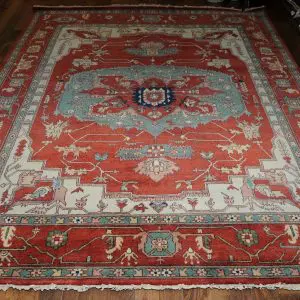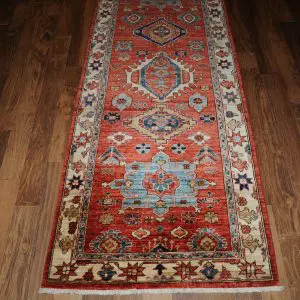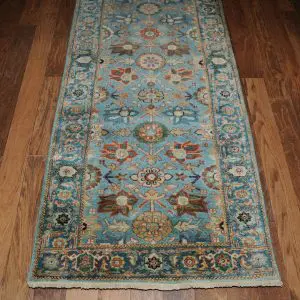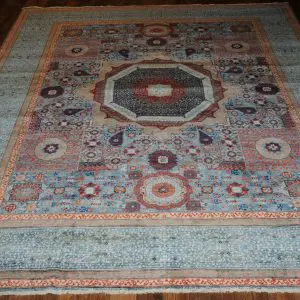Description
Our Fine tribal rugs are a vibrant testament to the country’s rich history and culture. Their roots trace back centuries to nomadic tribes in the region who began weaving these artistic masterpieces as an integral part of their daily lives. These rugs served not only as protection from the cold and damp but also as an expression of their tribal identity and a means of passing down stories and traditions from generation to generation.
With Pakistan’s independence, the tradition of rug weaving continued to flourish, and the country became one of the world’s leading producers of Oriental rugs. Pakistani weavers have perfected their techniques over the centuries, creating rugs of exceptional beauty and quality in various dimensions to complement any interior design.
The styles of Pakistani tribal rugs are as diverse as the tribes that created them. Some of the most popular styles include:
- Balochi: Known for their bold geometric designs and vibrant colors, Balochi rugs reflect the nomadic life of the Baloch tribes.
- Pashmina: These rugs are characterized by their softness and fineness, thanks to the use of cashmere wool. The designs tend to be more delicate and intricate than other tribal rugs.
- Sufi: Sufi rugs often feature religious motifs and designs inspired by nature.
- Ziegler: Ziegler rugs are a type of Persian rug that has been produced in Pakistan since the late 19th century. They are known for their classic designs and high quality.
Pakistani tribal rugs share several common characteristics:
- Natural materials: Wool is the most commonly used material in the production of these rugs, although cotton and silk are also used.
- Hand-knotted: All knots in Pakistani tribal rugs are hand-knotted, giving them a unique and handcrafted character.
- Geometric designs: Geometric designs are very common in tribal rugs, and they often represent symbols and patterns that have special meaning to the tribe that created them.
- Vibrant colors: The colors used in Pakistani tribal rugs are intense and vivid, often obtained from natural dyes.
The types of knots used in Pakistani tribal rugs vary depending on the region and tribe. Some of the most common knots include the symmetrical knot and the asymmetrical knot. The symbols used in these rugs often have religious, cultural, or social significance.
Specific Care for Fine Tribal Rugs
To preserve the beauty and durability of a Fine Tribal rug, it is important to follow some care guidelines:
- Regular vacuuming: Vacuum your Tribal rug regularly to remove dust and dirt. Use the appropriate nozzle to avoid damaging the fibers.
- Avoid direct sunlight: Direct sunlight can discolor the colors of your rug. Place it in a location protected from sunlight.
- Professional cleaning: Tribal rugs should be professionally cleaned every so often. A specialized rug cleaner can determine the best cleaning method for your rug.
- Avoid stains: Clean any stains as soon as possible using a clean cloth and cold water. Avoid rubbing the stain, as this can damage it.
- Protect the edges: Place doormats at entrances to prevent dirt from adhering to the edges of your rug.
If you’re looking for an authentic and high-quality Fine tribal rug, Sharian is your best choice. With years of experience in the world of Oriental rugs, Sharian offers a wide selection of tribal rugs, as well as cleaning and restoration services.





